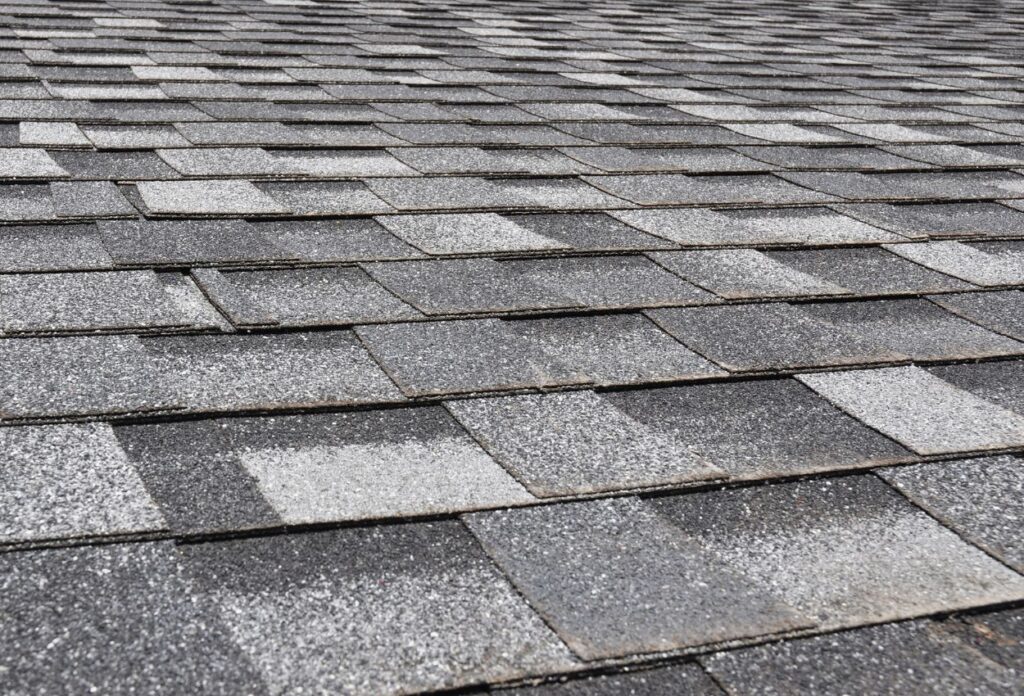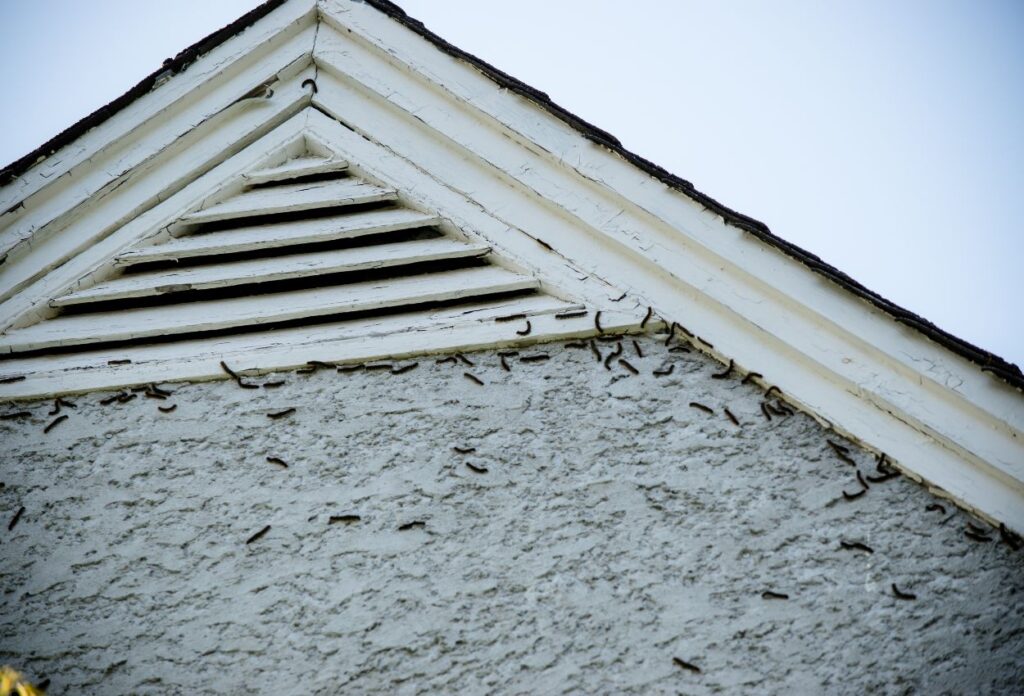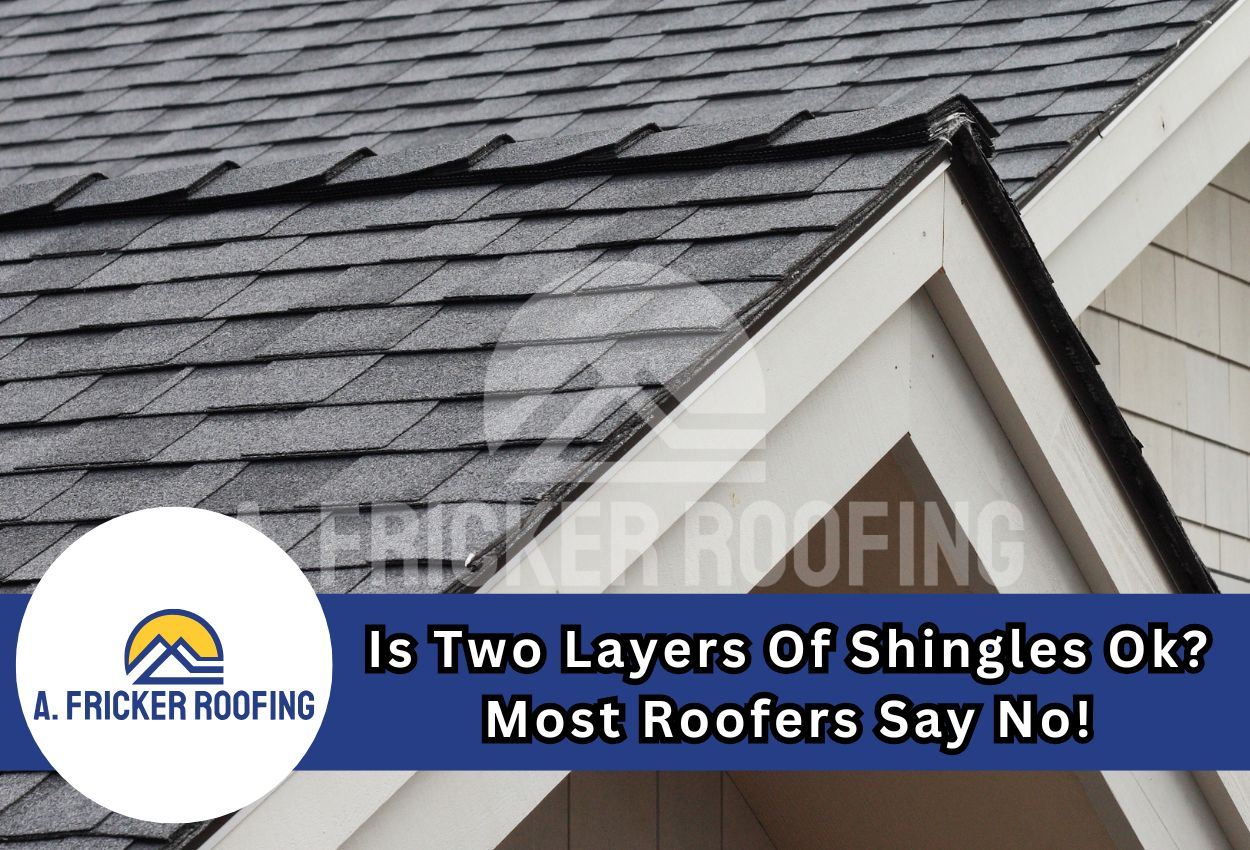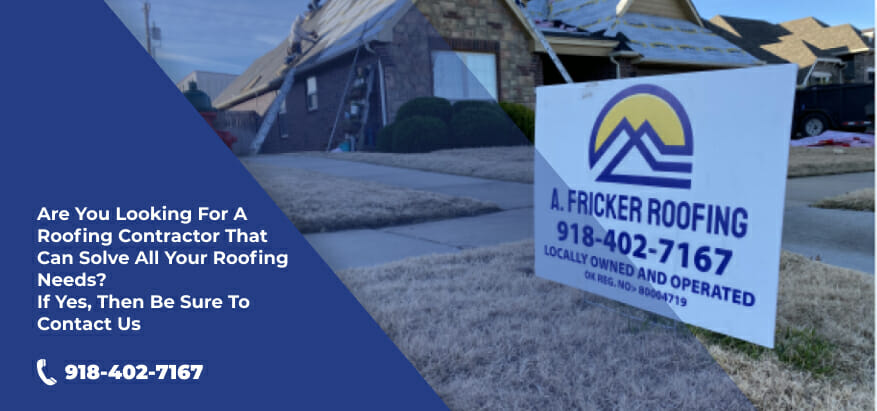In our blog post on whether you can install new shingles over old ones, we explained the circumstances when it’s allowed to have two layers of shingles on a roof.
But code compliance isn’t the full story. Most homeowners don’t hear the risks until they face repairs or warranty issues.
These second layers don’t just hide problems; they create them. From hidden rot and pest infestations to a shortened roof life, we’re breaking down the real costs of a roofing shortcut that seems smart but rarely holds up.
What Roofers Find Under Two Layers of Shingles

When we remove two layers of shingles during a tear-off, we often uncover significant issues hidden beneath the surface. Here are some common problems we have seen:
1. Concealed Roof Deck Damage
The roof deck, or sheathing, is the foundation for your roofing system. It’s impossible to inspect this critical component without removing the existing shingles. We’ve found cases where moisture had seeped through, leading to rot and compromising the roof’s structural integrity. This hidden damage can go unnoticed until it causes major issues, such as sagging or leaks.
2. Compromised Flashing
Flashing is essential for directing water away from vulnerable areas like chimneys, vents, and valleys. The existing flashing is often reused when adding a second layer of shingles. Over time, we’ve observed that this old flashing deteriorates or shifts, increasing the risk of leaks. Replacing flashing during a tear-off ensures that these critical areas are properly protected.
3. Increased Structural Load
Each layer of shingles adds weight to your roof, and in our experience, this additional weight can strain the home’s structural framework, especially in older buildings not designed to support it. This added weight can lead to issues such as sagging roofs and, in extreme cases, structural failure.
4. Trapped Heat and Moisture
A double layer of shingles can trap heat and moisture between the layers, accelerating the deterioration of both the shingles and the underlying materials. We’ve seen cases where this trapped moisture led to mold growth and reduced the roof’s overall lifespan.
5. Pest Infestations

The gaps and spaces created by layering shingles can become entry points for pests such as insects and rodents. During tear-offs, we’ve discovered nests and infestations that compromised the roof’s integrity and required additional remediation.
6. Voided Warranties
Many shingle manufacturers void their warranties if shingles are installed over an existing layer. This means that any future issues may not be covered, leading to out-of-pocket expenses for the homeowner.
By opting for a complete tear-off and replacement, you allow the roofing system to be thoroughly inspected and issues remediated of these potential problems, ensuring the longevity and safety of your new roof.
What Home Inspectors and Buyers Look For
Even if your roof looks decent from the curb, two layers of shingles can raise red flags during a home inspection — and that can impact your resale value more than most sellers expect.
Quick Math: Overlay vs. Tear-Off:
| Tear-off cost: | $8,000 to $15,000 |
| Overlay cost: | $5,000 to $12,000 |
| But replacement cost later: | +25% to 50% |
| Warranty impact: | Often voided |
| Resale impact: | Lower home value or lost buyer |
1. Two Layers = Immediate Inspection Notice
Most certified home inspectors are trained to spot a double-layer roof. When they do, it almost always makes it into the inspection report. That report goes straight to the buyer and their agent, which can trigger renegotiations, repair requests, or even lost deals.
2. Reduced Buyer Confidence
Buyers often view two shingle layers as a sign that corners were cut. Even if the roof isn’t leaking now, many assume it has a shorter lifespan and will need full replacement soon. That perception can lower your home’s market value or time.
3. Insurance and Lending Issues
Some insurance providers hesitate to write new policies on homes with double-layered roofs. Others may increase premiums or exclude roof coverage entirely. Similarly, certain lenders may ask for roof certification or repairs before closing.
The Real Cost of Two Shingle Layers
Installing a second layer of shingles may seem like a smart way to save money at first. Homeowners often save $1,500 to $3,000 by skipping the tear-off. But those savings rarely stick over time.
1. Shorter Roof Lifespan
A roof with two layers typically lasts 30% to 40% less than a single-layer installation. Trapped heat and moisture break down the shingles faster, leading to early repairs or full replacement in as little as 12 to 18 years.
2. A Voided Warranty = Higher Risk
Most manufacturers void their warranties if shingles are installed over existing ones. That means if your roof leaks or fails, you’ll be covering all the repair costs yourself.
3. Future Tear-Offs Cost More
A two-layer roof may be cheaper today, but when it’s time to replace it down the road, removal costs are 25% to 50% higher. Why? Because your roofer now has to tear off two layers, not one, and handle double the debris.
4. Resale Setbacks
Buyers often use a double-layer roof as leverage to negotiate a lower price — or ask for a full roof replacement before closing. That could wipe out your upfront savings during sale negotiations.
Bottom line: Overlays may reduce cost today but increase total cost over the life of your roof.
What Shingle Manufacturers Say About Two Layers
Even when local codes allow a second layer of shingles, that doesn’t mean manufacturers stand behind it. In fact, most major brands discourage it — and some won’t honor warranties if it’s done.
GAF
GAF allows overlays in limited cases but outlines strict conditions:
- Only one existing layer is permitted
- The original shingles must lie flat and be in good condition
- The roof deck must be solid, and ventilation must meet minimum standards
Even then, their strongest warranties — like the Golden Pledge — require a full tear-off to be valid.
Owens Corning
Owens Corning permits installing new shingles over old ones but clearly warns:
- Warranty coverage may be reduced or voided
- Overlays may lead to aesthetic issues and poor surface adhesion
- Laminate or dimensional shingles should not be installed over uneven bases
CertainTeed
CertainTeed allows overlays but recommends tear-offs as best practice, especially if long-term performance or warranty coverage is important to the homeowner.
If you want the full protection of your shingle warranty, a clean tear-off is almost always required.
Not Sure What’s Under Your Roof? Let’s Take a Look
So, are two layers of shingles ok? Maybe by some local codes — but not when you see what’s underneath. You’re adding weight, trapping heat, and covering up damage that could cost thousands later. Most roofers who’ve done tear-offs know the risks firsthand.
At A. Fricker Roofing and Waterproofing, we don’t believe in shortcuts. We believe in roofs that last. If you’re considering a roof replacement or wondering if an overlay is even an option, let’s take a look together. Our team will inspect your current shingles, evaluate your decking, and give you straight answers with no pressure.
Call (918) 402-7167 or schedule your free consultation to get started. We’ll help you uncover what’s really going on — before it gets expensive.

